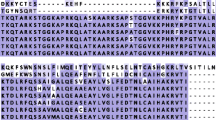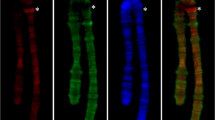Abstract
Comparison of histone gene cluster arrangements in several species has revealed a broad spectrum of histone gene patterns. To elucidate the core histone gene organization in a mollusk, we have analyzed a Mytilus edulis genomic library and have isolated eight phage clones containing core histone genes. Analysis of insert DNA revealed that the core histone genes are arranged as regular gene repeats of all four core histones. The repeats do not contain linker histone genes. The clones are distributed into two groups of dissimilar repeated units with a common size of about 5.6 kb. The genes of each core histone class in the distinct repeats encode identical histone proteins and have comparable gene arrangements in the two repeat units. However, the intergenic sequences differ significantly. The core histone genes are organized as large clusters of about 100 repeats each. Previously, we have shown that the linker histone genes in M. edulis are also organized in a cluster of repeats of solitary H1 genes. Hence, this is the first case of a separate, clustered organization of both core and linker histone genes, repectively.
Similar content being viewed by others
Author information
Authors and Affiliations
Rights and permissions
About this article
Cite this article
Albig, W., Warthorst, U., Drabent, B. et al. Mytilus edulis Core Histone Genes Are Organized in Two Clusters Devoid of Linker Histone Genes . J Mol Evol 56, 597–606 (2003). https://doi.org/10.1007/s00239-002-2428-8
Received:
Accepted:
Issue Date:
DOI: https://doi.org/10.1007/s00239-002-2428-8




